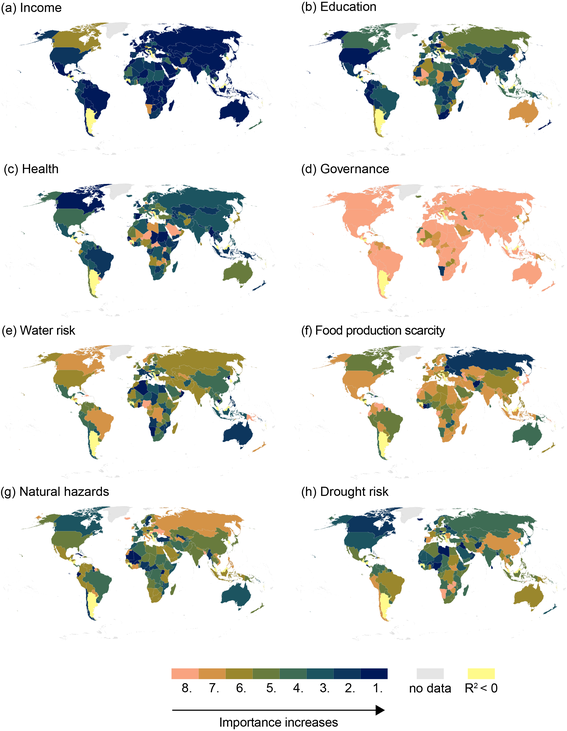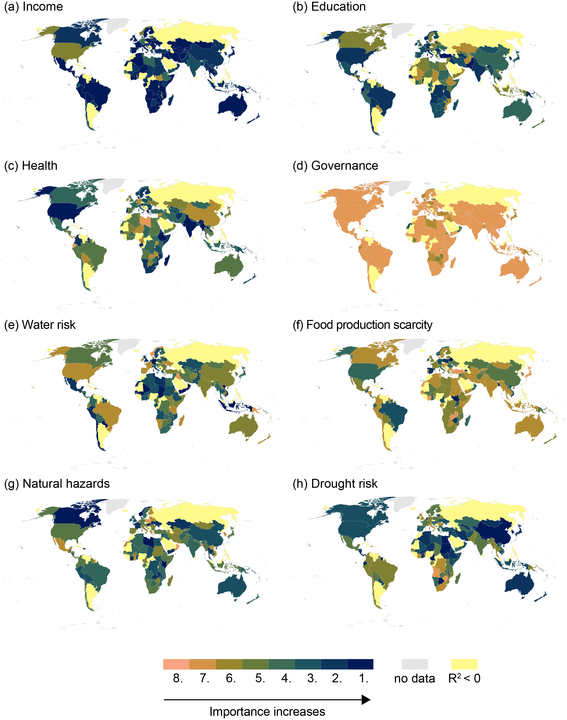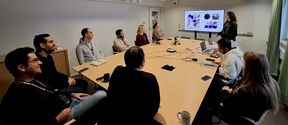Does environmental stress drive migration?

With the United Nations climate conference in Glasgow, the world is focused on the consequences of a climate crisis and how we can still change course. Yet while climate-driven migration has been deemed a major threat in public discourse and academic research, comprehensive studies that take into account both environmental and social factors globally have been scarce. Now, with the help of machine learning, a research team led by Aalto University has drawn a clearer picture of the factors involved in migration for 178 countries.
Traditionally, research on climate change-related migration has taken a linear approach, concentrating on whether or not environmental stress is directly related to migration—typically for one country or set of countries at a time. Researchers have known that social factors must also play a role, but studying both at a global scale, with all necessary information for all countries and sub-regions, has been a major challenge.
‘Perhaps the most surprising finding from our study is that, when we look at the overall picture, social factors are more important than environmental factors in explaining migration. And regardless of the level of income involved, gross national income was the key factor in explaining net-migration in half of countries,’ says Venla Niva, a doctoral student at Aalto University and lead author of the study published in Environmental Research Letters.
In their analysis, the team made use of a machine learning technique, called random forest analysis, well suited to dealing with the complex relationships seen between variables in very large sets of data. This allowed the researchers to explain the importance of each factor for each of the countries studied.

Social factors were assessed in terms of income, education in years, life expectancy, government effectiveness; environmental factors were measured through natural hazards, water risk, food production scarcity, and drought prevalence.
The map shows the most and least important variables in each country’s model; the higher the importance, the better the variable is in explaining net-negative migration in each country.
Income was the most important factor in Finland and Ethiopia, while in the US and South Africa education explained the majority of within-country variation for net-negative migration.

In areas like the US and Ethiopia where in-migration surpassed out-migration, health was the most important factor, whereas in Finland and South Africa income was the feature that best explained net-positive migration.
Globally, out of environmental variables, drought risk was the most important variable. In Ethiopia, two environmental variables ranked in the top three factors in terms of net-positive migration: drought risk and water risk.
The data used in the study is from 1990 to 2000, the most recent period for which information from 178 countries of the world, both high- and low-income, is available at the level of detail studied: 10 km by 10 km units.
‘Very detailed data at the local, rather than national, level lets us see the areas from which people have moved, as well as the areas people have moved to—whether that’s across borders or within the country. For example, if a specific area has seen environmental stress, like a drought, we can zoom in to see whether there has been a loss of people due to out-migration over that same period,’ says Niva.
Majority of net-migration occurred in vulnerable regions
That same level of detail confirmed that while environmental pressures alone are unlikely to directly cause migration, environmental pressures in departure countries or areas are relevant. More than half (58%) of net-negative migration occurred in areas with high environmental stress and low capacity to adapt to changes.
‘This is one of the biggest challenges of our times: the areas under environmental stress are the areas with lowest resilience, which means that they aren’t well equipped to cope with changes. As populations in Africa and South Asia are rapidly growing, decision-makers need to help build capacity to ensure vulnerable areas can deal with the consequences of a warming climate as well as other environmental stressors,’ explains Matti Kummu, professor of global water and food issues at Aalto University.
To get a better sense of how the factors explain more recent global migration, the team is currently creating a dataset that spans 2000-2020, with results expected in the next year or so.
‘For now what we can say is that with this recently published study we’ve been able to identify the basic factors involved in migration—next we’ll explore if and how the factors have changed in importance over time, as the climate heats up,’ says Kummu.
More information

Read more news
Apply to be a guest professor or visiting researcher at the Université Grenoble Alpes
Unite! partner, Université Grenoble Alpes (UGA) has opened a call to host international professors and researchers for short stays.
Floriane presents research findings on denim recycling
On 15 January 2026, Floriane Jacquin, an intern with the Textile Chemistry Group at Aalto University, presented the findings.
Postdoctoral researcher Eloi Moliner makes history as a 5-time award winner
Eloi Moliner is one of the most decorated doctoral researchers in Aalto University's history – we would like to highlight his success and contributions to the field of audio signal processing






